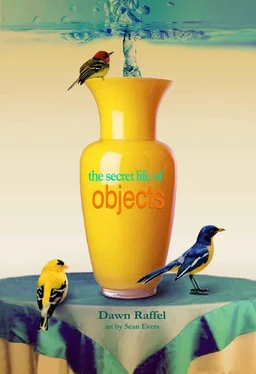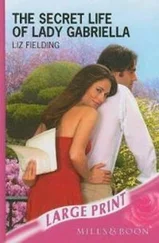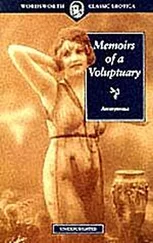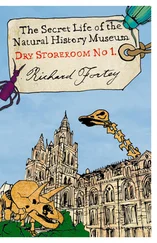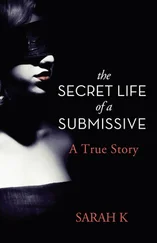About a year before she died, my mother called to say that she had found the Florsheim dog, only a little broken, in her basement, and that she was mailing it to me. She seemed to feel that I would be delighted by this news. Of the physical dog, which was cracked, and which my mother had stuffed with plastic bags to prevent it from caving in while in transit, I had no first-hand memory — my only memory was of an image fixed in time, a portion of my mother’s rendition of my childhood. The painting expressed not so much who I was by way of my possessions as who I was in the eyes of my mother, suffused, I can assume, with who she wished I was: the work not only of her genes and tutelage but also of her desire. The whole of the composition was more than the sum of the toys; it was a portrait of a child who had, for a moment, stepped away.
Eventually, in cleaning out the boxes in the basement of my mother’s house, I found the toy drum too. I was not surprised that Sean, who was past the age of playing with such things, wanted it. The drum belongs to his childhood as much as to mine, proof of the truth of the image, a residue of who his mother was, by way of his grandmother’s eyes.
The painting is stored in my basement now, covered by sheets, as if shrouded, until, perhaps, I have a grandchild who might like it.
As for the Florsheim dog, it’s sitting on my nightstand, a loyal, broken guardian — not of my dreams but of my mother’s vision of what they might have been.
My mother and sister were having a mother-daughter art show in Milwaukee. My sister, who was living outside of Dallas, had dozens of her watercolors shipped north and framed. My mother went through her studio and attic, making choices from a lifetime’s work of oil, acrylic, watercolor, and sculpture. I flew in for the opening with my sons, who were then two and five. (Of greatest interest to the children were the platters of dainty cookies — my mother felt no event was complete without them, including any reading I ever gave in Milwaukee. These sugary confections with their tough red cherry centers took me back to the stale consolations of my childhood, waiting for my mother to finish — finally, finally — at whatever gallery over which she was presiding).
The mother-daughter show was attended mostly by our Raffel cousins, my aunt and my uncle, and by my mother’s enormous network of friends. My mother had “best girlfriends” dating back to grammar school in Chicago, through every stage of her childhood and adulthood and, as people retired, in all the warmer parts of the country: Florida, the geriatric towns in California, New Mexico, Arizona.
My sister’s evocative watercolors — some of nature, others more abstract, even quilt-like — were familiar to me. I had seen the bulk of them before, and those that I hadn’t seen correlated so directly to my own interiority that I felt I already knew them. Many of her paintings sold that day.
My mother’s work was also mostly known to me, save for a dark, moody landscape that looked like a place one might remember only briefly after waking. It was nothing like the paintings — brighter, more primary, more insistent on good cheer — that I had seen throughout all of my childhood, and it turned out to have been a survivor of her high school studies at the Art Institute in Chicago. It seemed to represent some animate part of my mother that I had always sensed and that, I felt, she had tried to suppress. It refused to be nice. Even a charcoal drawing of her own mother, my Grandmother Bern, lying in her coffin (believe me, this was not on display, and she had been reprimanded for it by some of her fellow art students in Milwaukee, who found it unnecessarily morbid), held, to my eyes, a certain degree of politeness.
My father had once incensed my mother by commenting that she’d been a better artist before she earned an art degree, at the University of Milwaukee, while I was in grade school. But here was evidence that his assessment, if not kind, was not entirely untrue.
Only one of my mother’s paintings sold that day, and I am heartbroken to report that it was that impassioned landscape, for hundreds of dollars. An acquaintance of hers, someone I didn’t know, bought it. I lacked the courage to say that I wanted that image, that view of my mother’s psyche, for myself.
After the show, the family went out to a restaurant that had a game arcade where the kids could play while we ate bargain Continental cuisine. I went to check on Sean and found him mesmerized in front of a man playing a game in which you insert a dollar and have 30 seconds or so to capture a stuffed dog with a metal crane. Into the crane and down the chute came a big brown canine prize of indeterminate breed while my son watched with unadulterated longing. I watched as the man turned and saw Sean and, without a word, handed him the dog. And I watched Sean’s expression change from longing to the look of someone who has just been given the thing he believes he will never possess.
After World War II, during the decades that he worked in the family furniture store, my father’s talent for engineering and invention lay fallow, save for the odd gadget — the magnetic toothbrush! — that never left our home, and the occasional repair, such as the vacuum cleaner motor installed in the ancient organ caked in dust in the basement, which allowed us to play it (badly) and which, we later learned, meant that it was no longer worth the fortune it would have been worth untinkered with.
Then came the 1970s. My father, unimpressed with the vibrating chairs that had come to popularity, developed a motor that, when installed in furniture, created an interference wave pattern. This effect was closer to that of being massaged by two hands than to being mechanically goosed. Within a few years he had patented the Tranqil Ease (intentionally misspelled, as was the fad at the time) and was selling components to major purveyors of chairs, including Sears. He later expanded the business to include wands that slipped under the mattress. (A disastrous collaboration with a waterbed company in San Francisco — the result of his capacity to see only the best in people — nearly bankrupted him at one point. He kept his round waterbed, however, for the rest of his life.)
Meanwhile, the big chains were steadily encroaching on the furniture business, and the family stores, in two locations, faltered. My grandfather had started the business in the 1930s, after years of working at Sears and an almost equal number of years of urging from my grandmother. The original store was a child’s paradise, spread over three levels, with a deserted cashier’s booth like a ghost motel suspended above the main floor. (Years earlier, bills of sale had been written up by the men — and they were all men — on the floor, then clipped to a pulley and yanked heavenward to the cashier.) The basement had a trapdoor entrance via the sidewalk and a big coal-burning furnace. On the top floor, often deserted, were Philco appliances and dinette sets with plastic bowls of plastic fruit. My sister and I would spend hours up there playing house. In the 1960s, my father and uncle each opened their own enormous exurban branch with cost-effective floor space, devoid of quaint contraptions. The original store, in what became a violent neighborhood, was finally closed after my grandfather was robbed at gunpoint and locked in the bathroom. From then on, he spent his days at my uncle’s store, mostly sitting at a desk by the clerical pool, deep into his nineties.
By the late 1970s, it was impossible to compete with Levitz and its like; the store was converted into a cash-and-carry, as-is, no-frills show room with deep discounts on factory overruns and discontinued styles. This was a temporary goldmine — even I, a high school kid, was allowed on the sales floor because there weren’t enough people to write up orders fast enough. My father, who’d never spent much on himself, was seen driving around town in what the cousins referred to as the pimp mobile; he also bought an airplane. Then it went bust. (If imitation is the sincerest form of flattery, then the business’s bigger corporate admirers flattered it to death.)
Читать дальше
